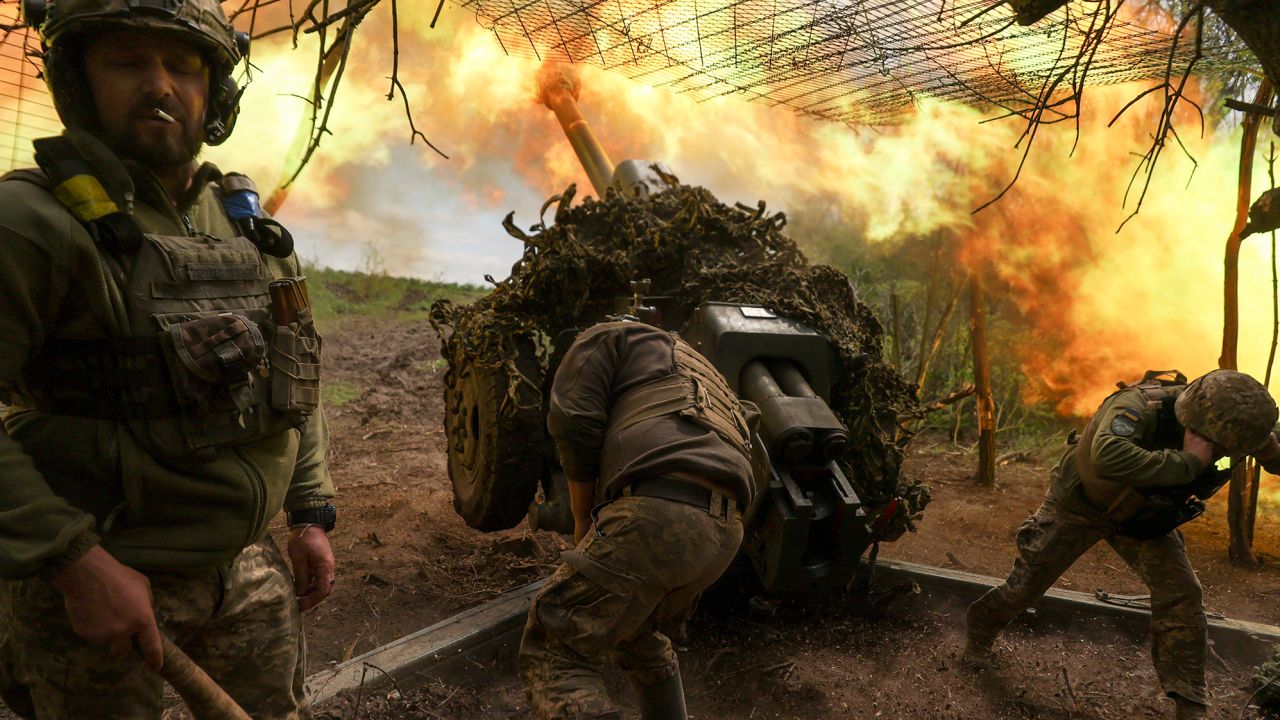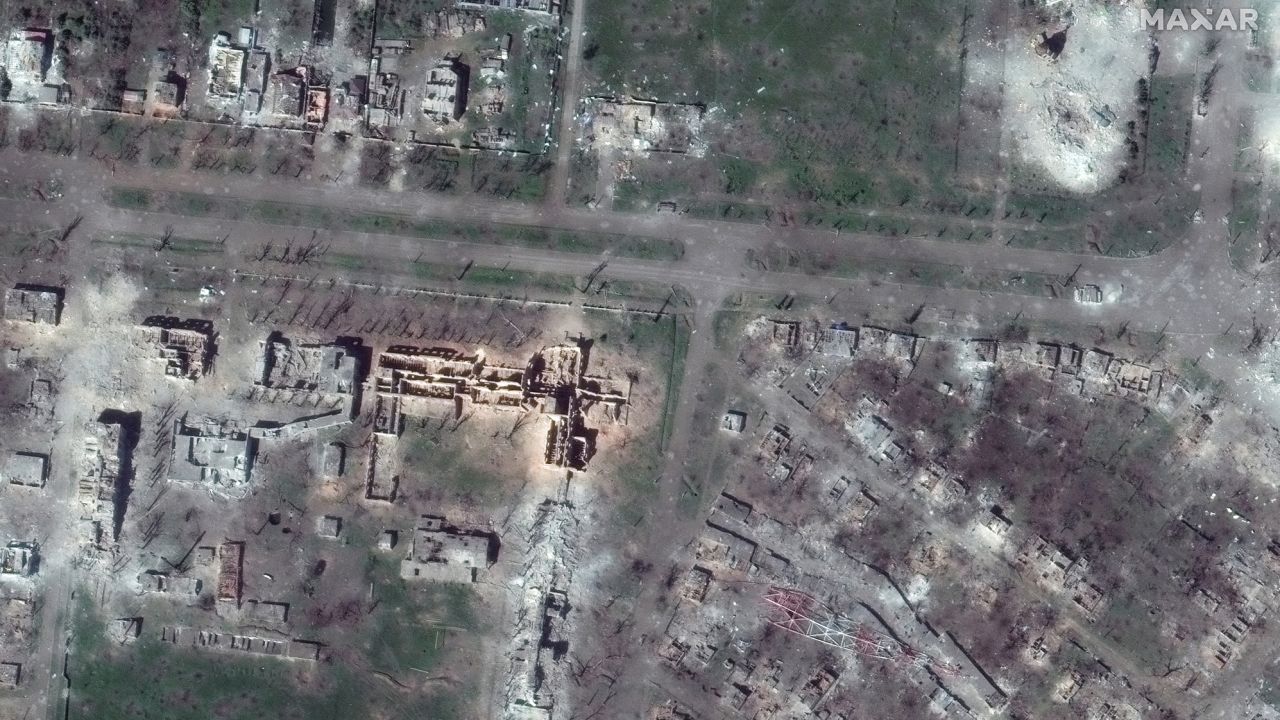Zaporizhzhia, Ukraine
CNN
—
The columns of dozens of US-supplied M-ATVs kept coming, preceded by a police car, lights blaring, and tailed by dozens of muddy, civilian saloons. Where the armored vehicles were ultimately destined for was unclear. But they were still beige – the paintjob they would have had for use in Iraq and Afghanistan – suggesting they were at least a spray can or mud-shower away from being ready for use on the front line.
Over five weeks reporting along the southern frontlines, it became hard to conceive that – at least in its limited, preparatory stages – Ukraine’s counteroffensive had not got under way in late April.
The relentless pinpoint bombing of Russian military targets; the hints of small Ukrainian landings along the occupied eastern bank of the Dnipro River; and the blasts hitting fuel depots and infrastructure inside Russia’s own borders and in occupied cities – these could all be seen as indicators.
Also, too, a helicopter attack we witnessed against a Russian target; the persistent signals from occupied officials of Ukrainian probing attacks along the Zaporizhzhia frontline; and the evacuation of the civilian population in occupied areas.
The signs have gathered in pace over the past month, and are the opening traces of the “shaping operations” that a senior US official told CNN began last week. Yet officially, Ukraine’s counteroffensive has yet to start.
Given the volume of US and NATO hardware, advice and training poured into this operation – with a senior US official recently telling Congress the US had coached Kyiv in how to “surprise” – it seems fair to assume this delay in declaring the start of the assault is a tactic, not the product of Ukrainian chaos, disorganization, and a relatively wet April leaving the ground too soft.
Announcing the start is entirely in the gift of Ukrainian President Volodymyr Zelensky. Declare the operation underway, and the clock ticks immediately for the first results. Say it has yet to get underway, and any mounting losses Russia sustains are just in the cut and thrust of normal frontline attrition. Over the past month, Zelensky’s obfuscatory comments that the operation’s “first important steps” would “happen soon,” or needed “a bit more time,” have just doubled down on Kyiv’s initial pledge they would not announce its start.
It is possible we only learn the counteroffensive has begun when its first tangible results are revealed. A lot of what is happening is not playing out in public.
The aim of this confusion is clearly to keep Moscow off-balance, unable to assess whether each new attack by Ukrainian forces is “it,” or just another probe.
The recent assaults around Bakhmut are evidence in point. The chief of the Russian mercenary group Wagner, Yevgeny Prigozhin, spent 10 days in an elaborate conversation essentially with himself on Telegram, warning of Wagner’s collapse without more artillery shells from Russian top brass. He received almost no official public response to his pleas, and it is unclear whether they altered any of the Russian Ministry of Defense’s supply patterns.

Prigozhin’s remarkable survival, after this bout of public criticism of the Kremlin’s men, is an expression of both need and fear: Putin perhaps fears the backlash Prigozhin’s removal would cause, and also needs Wagner forces to maintain their positions. He may also still need Prigozhin as a foil to a powerful military. As with so much Kremlinology, the truth is for now unknowable, but also not that consequential.
What is key is the resultant display of staggering disunity in Putin’s ranks – something unthinkable in February 2022. Prigozhin’s outburst has so far resulted only in slight territorial changes in control around the symbolic city of Bakhmut.
But it has more significantly revealed a seismic difference in how Russia and Ukraine’s war machines are functioning.
Kyiv has so far managed to keep secret its intentions, preparations, and any possible false starts. The Ukrainians appear to have patience, and the ability to keep their plan confidential enough to carry it out methodically. Moscow instead has paraded its dysfunctionality in full. This will be vital in the weeks ahead: Moscow appears to process bad news very poorly and publicly.
So far, the most information we have had about Ukraine’s operations has been from pro-Russian occupation officials and military bloggers. At times, it may be purposeful disinformation.
When Russian sources warned of Russia’s troops being surrounded in Lyman this summer, it was likely a ruse designed to distract from Moscow executing a calm withdrawal. But at other times, their online debate of policy and weaknesses projects chaos into ranks that clearly do not need it. The Russian withdrawal from Kherson was another striking example of conflicting messages from senior officials.

Yet still, as with the turmoil around Wagner and Bakhmut, the disorder of their messaging around it cannot always be rationally explained as a purposeful fog of misinformation. Nobody wants to look that messy when frontline morale is surely so low.
In the weeks ahead, we will likely see more confusion about what Ukraine is up to. Strikes against specific and important Russian targets, deeper inside occupied territory, may pick up in pace and ferocity, as with the apparent missile strikes on large buildings inside Luhansk.
We may also see more apparent false Ukrainian starts along a 1,000-kilometer (620-mile) frontline. In the West, Ukraine must make occupied Kherson continue to appear vulnerable to a larger amphibious assault across the Dnipro River; and in the east, Bakhmut must still seem precariously at risk of its city being surrounded by renewed Ukrainian advances. And between these two flanks, the huge southern front of Russian-occupied Zaporizhzhia must also remain vulnerable to a swift advance through Russian fortifications by a better-equipped and more precise NATO-trained army.
Moscow cannot afford to lose on any of these three fronts. Yet it may be forced to choose – to prioritize – and with that choice will come the first risk of a wider strategic defeat for Putin.
Lose any one of these “prizes” of occupation and the entire project looks even flimsier than it did when the Kremlin had to admit, for whatever reason, it had been attacked by drones in the heart of Moscow. One public, strategic loss could leave Russian ranks at risk of a wholesale panic and collapse.
Zelensky’s most telling comments on the operation were perhaps his renewed and blatant plea for more Western arms: he said victory was assured but without better equipment faster, more Ukrainian lives would be lost. This is a key tenet so far of Kyiv’s campaign: the sanctity of Ukrainian life. Their losses are doubtless significant, but they are wildly less accepting of them than their enemy.
A full-frontal assault against weakened Russians positions – where supply chains, command and morale is likely weak – is possible by Kyiv at any time. But weeks more of Russian confusion, overstretch, and public self-criticism will likely reduce the ultimate human cost on Kyiv.
While Moscow’s mixed messages perhaps herald rare signs of internal fissures, Kyiv’s are a sign of purpose and resolve.

